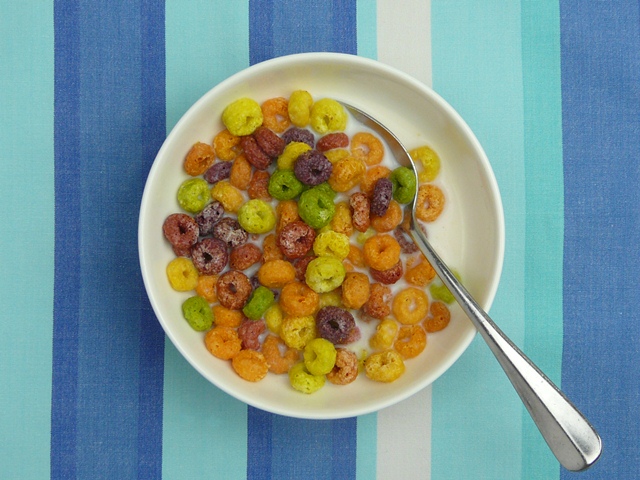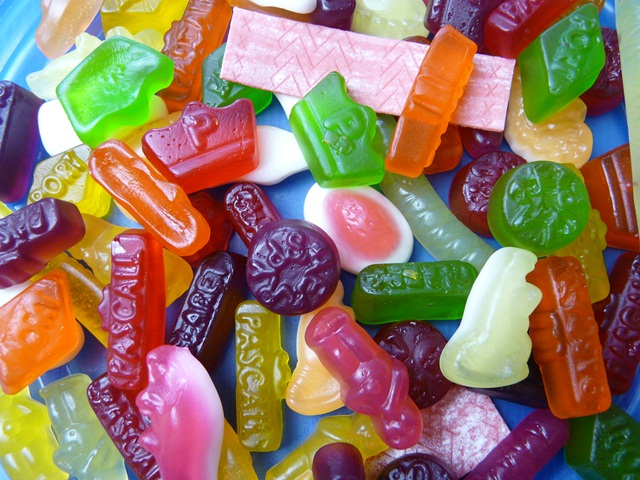- Home
- Blog
- Additives and Labels
- Additives, colours and kids
Additives, colours and kids
Written by Catherine Saxelby
on Friday, 14 December 2012.
Tagged: additives, allergies, children, food colours, guides, healthy cooking, healthy eating, kids, tips

Is your child out-of-control and hard to handle after eating junk food full of colours and preservatives? Are they unusually restless or irritable after eating certain foods? For a small percentage of kids, behavioural problems can be caused by food. Read on to find out more about kids and additives ....
Some foods can make kids go off the rails
If your child has an underlying sensitivity, food allergy or intolerance, you may see a range of behaviours including hyperactivity, irritability, aggression or confusion after they've eaten certain foods. If you think this applies to your child, talk to your doctor or an accredited dietitian. They can help you take steps to identify the culprits.
The Royal Prince Alfred Hospital in Sydney uses their Elimination Diet to test food sensitive children. While this should only be done under supervision, some families have noticed improvements by reducing their child's intake of preserved, coloured and highly flavoured foods.
If your child is hard to handle after a party, it doesn't automatically mean they have ADHD (Attention Deficit Hyperactivity Disorder). Children suffering from this disorder show the classic symptoms of ADHD (hyperactivity, lack of concentration and impulsivity) most of the time, both at home AND in the classroom - not just after a party. Remember only a small number of ADHD children are food sensitive.
Bad behaviour can be a result of being ‘allergic' to food
Behaviour is just one of a number of ways that food sensitivity shows itself. Chemicals in food can also trigger skin rashes, stomach pain, vomiting, loose motions, headaches, mouth ulcers, a runny nose or hay fever - as well as bad behaviour.
Food triggers can be EITHER additives or natural chemicals such as salicylates (in many fruit juices), amines (in tasty cheese) and glutamates (in soy sauce and mushrooms).
The most common culprits are colours in foods like cordials, soft drinks, snack foods and lollies. Other additives that can cause reactions are preservatives, antioxidants and flavour enhancers. Sugar - white or brown - doesn't contain problem chemicals and doesn't have to be eliminated but it shouldn't be over-indulged in either!
Not all colours cause problems
Not all colours are artificial or cause problems. Recently there has been a move towards using more natural colours in foods, especially food intended for kids.
Red lollies now use:
- carmine, derived from cochineal (120)
- annatto extract (160b)
- beet red (162) or
- cherry juice extract
instead of red No 122 (azorubine) or red No 129 (Allura red AC).
Yellows and oranges come from:
- beta-carotene in carrots or pumpkin
- curcumin (100), the natural colour from turmeric or paprika.
Purples come from:
- anthocyanins (163) which are found in grape skins, elderberry or red cabbage
- browns come from caramels (150a-d).
What colours are suspect?
- The red food dye erythrosine (127) has been restricted since 1997 to only colouring maraschino cherries as no other red colour will hold.
- Tartrazine (102), a yellow colouring, is suspected of provoking asthma, urticaria (hives) and mood changes.
- Sunset yellow FC (110), Amaranth (123) and Brilliant Blue FCF (133) are under a cloud for being potentially carcinogenic or for triggering reactions ranging from bad behaviour and wakefulness at night to skin rashes.
Culprit chemicals
| Colours, artificial | 102, 110, 122-133, 142, 151, 155 |
| Colours, natural | 160b |
| Preservatives | 210-213, 220-228, 280-283, 249-252 |
| Antioxidants | 310-312, 320, 321 |
| Flavour enhancers | 620-625 |
Party foods that won't send your kids off the rails
Here is a list of fun party foods that are safe for kids who react to food. All the brands listed are FREE FROM the trigger chemicals - other brands may not be.
- McCains Healthy choice oven wedges and fries, home made meat balls (hold the tomato sauce!), deep fried crumbed chicken tenderloin or home made nuggets
- Kettle chips or Parkers Pretzels
- Sandwich triangles with Philly cream cheese or golden syrup
- Sara Lee French Vanilla Ice Cream in Betta natural cone cups or with Betta fan wafers or Kellogg's LCM's cut into portions
- Schweppes Lemonade
- Sara Lee All Purpose Pound Cake, Defiance Multipurpose baking /muffin mix topped with Nestle White Melt icing
- Carob buttons or Yoghurt drops, Nestle Milkybar, Allens milkshakes and milkbottles, Darrell Lea white jelly beans, Pascall Columbines, Grans Fudge, Jersey Caramels
|
Food sensitive kids should avoid fruit juices, brightly-coloured soft drinks, tomato sauce, sausages, seasoned chips and coloured lollies.
|
The assistance of dietitian Jane Dostine, Allergy and Intolerance Dietitian is gratefully acknowledged.
You may also be interested in...
Jemma O'Hanlon
The Good Stuff
The Boring Stuff
© 2025 Foodwatch Australia. All rights reserved
Website by Joomstore eCommerce







